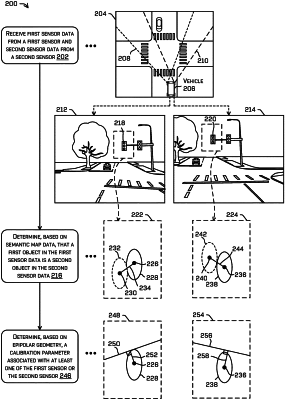| CPC B60W 60/0018 (2020.02) [B60W 50/0205 (2013.01); B60W 50/045 (2013.01); G06F 18/24 (2023.01); G06V 20/41 (2022.01); G06V 20/56 (2022.01); B60W 2050/0083 (2013.01); B60W 2556/45 (2020.02)] | 20 Claims |

|
1. A system comprising:
one or more processors; and
one or more non-transitory computer-readable media storing computer-executable instructions that, when executed, cause the one or more processors to perform operations comprising:
receiving first sensor data from a first sensor associated with an autonomous vehicle in an environment;
receiving second sensor data from a second sensor associated with the autonomous vehicle;
receiving semantic map data associated with the environment based at least in part on a number of semantic objects within a threshold distance of the autonomous vehicle;
determining that first sensor data from the first sensor and second sensor data from the second sensor correspond to a semantic object determined based at least in part on the semantic map data;
determining a center point and covariance data associated with semantic object;
determining, based at least in part on calibration data, the first sensor data, and epipolar geometry, a distance between the center point associated with the second sensor data and an epipolar line;
determining, based at least in part on the distance, a calibration parameter associated with at least one of the first sensor or the second sensor; and
controlling the autonomous vehicle based at least in part on the calibration parameter,
wherein the threshold distance is based on at least one of:
a classification type of the semantic objects in the environment,
a frequency of the semantic objects in the environment, or
a location in the semantic map data.
|